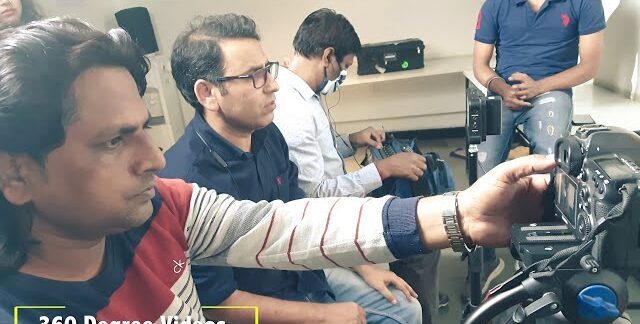Ad Films For Branding
Ad films are a powerful form of marketing and branding. They’re designed to communicate your brand’s message in a way that is both impactful and memorable. But with so many different elements to consider, it can be difficult to know where to start when creating an ad film. That’s why we’ve put together this guide on everything you need to know about ad films for branding. From the different types of ad films to tips on how to make yours stand out, this guide will give you all the information you need to create an ad film that will effectively communicate your brand’s message.
The Benefits of Ad Films
Ad films are an extremely effective marketing tool that can help promote your brand, product, or service. Ad films can be used to create awareness, interest, and even desire for your product or service. They are also a great way to build trust and credibility with your target audience.
When done correctly, ad films can be a powerful addition to your overall marketing strategy. Here are just a few of the benefits of using ad films for branding:
1. Ad Films Can Create Awareness
One of the most important functions of advertising is creating awareness for your brand, product, or service. If people don’t know about your business, they can’t buy from you. Ad films can be an extremely effective way to get people to take notice of your company.
2. Ad Films Can Generate Interest
Once people are aware of your brand, you need to generate interest in what you’re offering. Otherwise, they’ll simply move on to something else. Ad films can be a great way to pique people’s interest and get them interested in learning more about what you have to offer.
3. Ad Films Can Build Trust and Credibility
If people are interested in what you’re offering, the next step is to build trust and credibility with them. After all, they need to feel confident that they’re making a good decision before they’ll hand over their hard-earned money. Ad films can help instill confidence in your target audience by
Types of Ad Films
Ad films are a great tool for branding and can be used in a variety of ways. Here are some of the most common types of ad films:
1. Commercials: Commercials are the most common type of ad film and are typically 30 seconds to 2 minutes in length. They are designed to promote a product or service and usually air on television or radio.
2. Infomercials: Infomercials are longer than commercials, typically 5 minutes to 30 minutes in length. They often air on late-night television and are designed to sell a product or service through an informative, persuasive presentation.
3. Corporate Videos: Corporate videos are usually produced by companies to promote their products, services, or brand to potential customers or investors. They can be any length but are often around 5-10 minutes in length.
4. Educational Films: Educational films are produced with the intention of teaching viewers about a certain subject matter. They can be any length but tend to be shorter than corporate videos, around 3-5 minutes in length.
5. Testimonial Videos: Testimonial videos feature customers or experts talking about their positive experiences with a company’s products or services. These videos can be any length but are typically around 1-2 minutes in length.
How to Make an Ad Film
An ad film is a short film or video that promotes a product or brand. Ad films are usually created by advertising agencies, production companies, or brands themselves.
There are many different types of ad films, but most follow a similar format: they tell a story that is designed to appeal to the emotions of the viewer and make them remember the brand.
The first step in making an ad film is to come up with a concept. This can be done by brainstorming with a team or hiring an agency to do it for you. Once you have a concept, the next step is to write a script. This will outline the story you want to tell and what visual elements you will need.
Once the script is written, it’s time to start filming. This can be done with a small team or even by yourself if you have the right equipment. The most important part of filming is to get high-quality footage that accurately represents your brand.
After the footage is filmed, it will need to be edited into a cohesive story. This can be done by yourself or you can hire an editor. Once the edit is complete, your ad film is ready to be shared with the world!
Tips for Making an Effective Ad Film
Ad films are one of the most powerful tools in a marketer’s toolkit. They enable you to tell your brand’s story in a compelling and emotional way and reach a wide audience. Here are some tips for making an effective ad film:
1. Keep it short and sweet. Ad films should be no longer than 60 seconds, as viewers tend to lose interest after this point.
2. Focus on emotions. Ad films should evoke positive emotions such as happiness, hope, or love. These feelings will stay with viewers long after the film is over and help create a positive association with your brand.
3. Use strong visuals. Ad films should be visually appealing, with strong images that capture attention and convey your message clearly.
4. Tell a story. The best ad films tell a story that viewers can relate to and remember. A well-told story will engage viewers and leave them wanting to learn more about your brand.
5. Include a call to action. Ad films should always include a call to action, whether it’s visiting your website, following you on social media, or making a purchase. This will help ensure that viewers take the next step in their journey with your brand
The benefits of ad films
There are many benefits to creating ad films for branding purposes. Perhaps the most obvious benefit is that ad films can be extremely effective in terms of reaching a target audience and delivering a message.
Another key benefit is that ad films can be highly engaging, offering viewers an immersive experience that can capture attention and interest. Additionally, ad films offer brands the opportunity to tell a story and create an emotional connection with viewers, which can be extremely valuable in terms of building loyalty and long-term relationships.
Finally, ad films can be very cost-effective, particularly when compared to other forms of advertising such as television commercials. When produced effectively, ad films can provide an excellent return on investment, making them an appealing option for businesses of all sizes.
The different types of ad films
There are many different types of ad films, each with its own strengths and weaknesses. Here are some of the most common:
Product demonstration: These types of ad films focus on showing the viewer how a product works. They often feature someone using the product in a real-world setting, which can help viewers see how it might fit into their own lives.
Comparison: Comparison ad films pit one product against another, usually in a head-to-head contest. These can be helpful for viewers who are trying to decide between two similar products.
Testimonial: In a testimonial ad film, someone who has used the product or service being advertised speaks about their experience. This can be an effective way to show potential customers that the product is worth their investment.
Storytelling: Storytelling ad films tell a narrative that is meant to evoke an emotional response in the viewer. These types of ads can be very effective at building brand loyalty and creating an emotional connection with potential customers.
How to make an effective ad film
An effective ad film is one that communicates the message of the brand clearly and concisely. It should be visually appealing and should evoke an emotional response from the viewer. The ad film should also be able to create a lasting impression on the viewer’s mind.
Conclusion
Ad films are a powerful branding tool that can help businesses reach their target audiences in a more effective way. By creating an emotional connection with viewers, ad films can persuade them to take action and buy your product or service. If you’re thinking of using ad films for your business, keep in mind the tips we’ve shared in this article to ensure that your campaign is successful.






